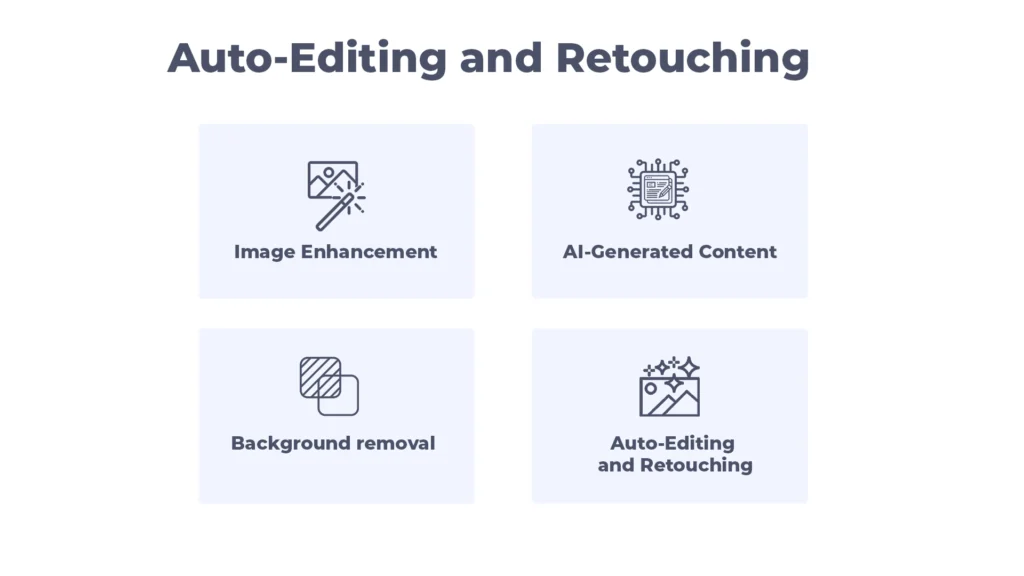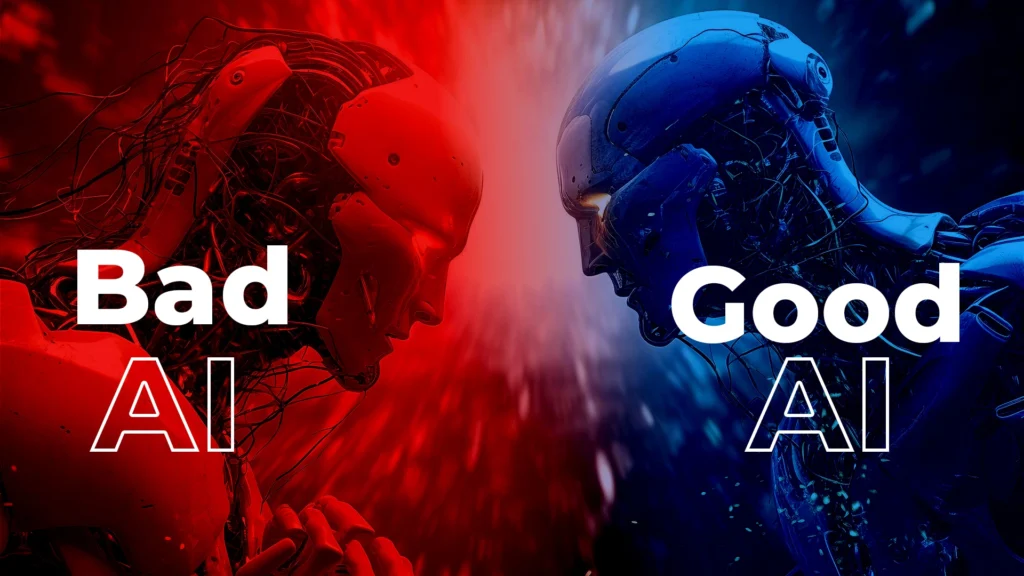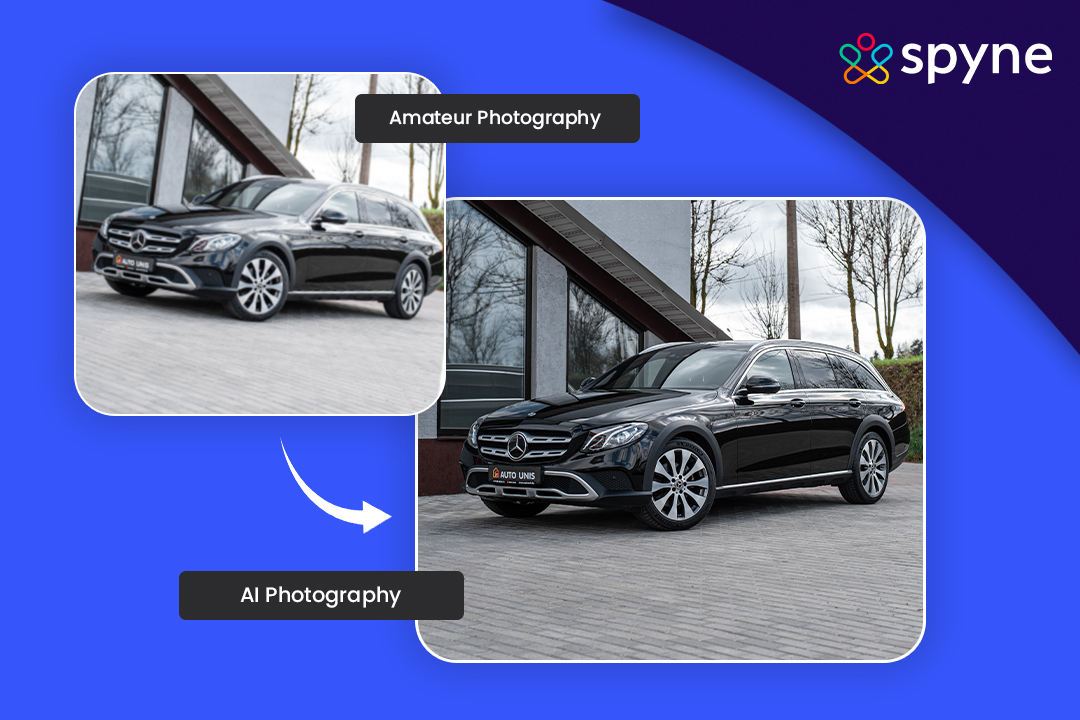Imagine having a magical wand that can instantly elevate your photography game. Well, that’s what Artificial Intelligence (AI) is doing. It’s not just a game-changer; it’s a transformational force that’s making photography easier and more exciting. In this blog, we’re going to delve into the incredible impact of AI on the world of photography, exploring its evolution, the tools that photographers can leverage, and its integration into camera technology. We’ll also take a peek into how AI is shaking things up in photography competitions and what regulations are governing its use. The big question, though, is whether AI is a boon or a potential bane for photography. Let’s dive in. And, as we wrap things up, we’ll paint a picture of the future, where AI promises to revolutionize photography, opening up new horizons for creativity and accessibility.
What is AI Photography?
AI photography refers to a form of photography that utilizes artificial intelligence to either generate new images or enhance existing ones that mimic real photographs. One of the most exciting applications of AI-generated photography is the creation of synthetic photo studios. It’s particularly remarkable for its capability to create virtual photo studios. These digital environments empower photographers to produce realistic images without physical studios or equipment, offering flexibility in location, lighting, backgrounds, and subjects, without the typical logistical challenges of traditional photo shoots.

How Does AI Improve Your Photography?
AI can improve the way photographers capture images by making post-processing less time-consuming and more focused on capturing shots. Here are some specific examples:
1) AI-powered autofocus systems can help photographers take sharper and more in-focus images, even in challenging situations. This can free up photographers to focus on other aspects of composition and lighting.
2) AI-powered noise reduction can help photographers reduce noise in images, especially those taken in low-light conditions. This can make images look cleaner and more professional, without having to spend hours in post-processing.
3) AI-powered image upscaler can help photographers upscale low-resolution images to higher resolutions. This can be useful for printing photographers’ images or for displaying them on large screens.
4) AI-powered style transfer can help photographers transfer the style of one image to another. This can be a fun way to create unique and creative images, without having to spend a lot of time in post-processing.
5) AI-powered background removal can help photographers remove the background from an image, leaving only the subject. This can be useful for creating product images or for creating composite images, without having to mask out the background manually.
How is AI Photography Changing the World?
AI photography is changing the world in a number of ways, including:
1) Making photography more accessible: AI-powered photography tools are becoming more accessible and affordable, making it easier for people to take and edit high-quality photos, even if they don’t have a lot of experience. This is opening up new opportunities for creativity and self-expression for everyone.
2) Automating mundane tasks: AI-powered software can automate many of the mundane and repetitive tasks involved in photography, such as image selection, cropping, and basic editing. This can save photographers a lot of time, allowing them to focus more on capturing shots and being creative.
3) Improving image quality: AI can be used to improve the quality of images in a number of ways, such as reducing noise, sharpening blurry images, and enhancing colors. This can make photos look more professional and polished, even if they were taken with a smartphone or other consumer camera.
4) Adding creative effects: AI can be used to add creative effects to photos, such as changing the background, adding objects, or creating surreal landscapes. This can help photographers to create more unique and interesting images that stand out from the crowd.
AI is also being used to develop new and innovative photography products and services. For example, AI-powered drones can be used to take aerial photos and videos that would be difficult or impossible to capture using traditional methods. AI is also being used to develop new types of cameras and lenses that can take better photos in challenging conditions, such as low light or underwater.
Evolution of AI in Photography
The evolution of AI in photography has been rapid and transformative in recent years. AI-driven algorithms can now automate many of the tasks previously performed by photographers and photo editors, such as:
1) Image Enhancement: AI Image Enhancer can enhance image quality by reducing noise, sharpening details, and adjusting colors.
2) AI-Generated Content: AI is used to generate content, from creating virtual models for advertising and entertainment to generating synthetic environments, reducing the reliance on traditional production methods.
3) Background removal: AI can be used to remove the background from an image, leaving only the subject. This can be useful for creating product images or for creating composite images, without having to mask out the background manually.

4) Auto-Editing and Retouching: AI photo editor can automatically retouch portraits by smoothing skin, reducing blemishes, and enhancing facial features, eliminating the need for extensive manual editing.
Should AI photos be differentiated from human-assisted or Raw photos?
The debate over whether to label AI-generated or AI-assisted photos as such is ongoing. Some argue that images should be them for transparency and to preserve traditional photography, while others argue it limits artistic freedom. In the end, the choice to label or not depends on the situation and goals of the business or individual. Some platforms may require labels for transparency, while others focus on the emotional and artistic impact of the image, regardless of its creation method. Balancing these perspectives is important as AI plays a growing role in photography and art.
How Photographers Can Utilize AI
Photographers can tap into the remarkable capabilities of AI to enhance their craft, with a primary focus on reducing noise, enhancing image details, and optimizing colors. AI-driven noise reduction tools are instrumental in cleaning up images taken in challenging lighting conditions, ensuring the final results are free from distracting artifacts. Additionally, AI algorithms excel at elevating the level of detail within photographs, making textures and patterns more pronounced, thereby enhancing image quality.
Furthermore, AI’s adeptness at color optimization guarantees that the colors in photographs are not only vibrant but also harmoniously balanced, significantly improving the visual impact of the image. By integrating AI into their workflow, photographers can streamline their post-processing tasks, save time, and maintain consistency across a series of images. Whether through automated exposure adjustments, subject tracking in dynamic scenes, or real-time analysis of shooting conditions, AI empowers photographers to capture stunning shots with less effort.
Its potential extends to portrait retouching, creative effects, image categorization, and even personalized settings, opening up new creative possibilities while delivering efficiency and high-quality outcomes. In sum, AI is a valuable tool that photographers can harness to elevate their work, offering both time-saving solutions and innovative enhancements to their photographic creations.
20 AI Technology-Powered Tools for Photographers
Here is the list of the 20 best photo AI-powered tools for photographers, businesses and individuals:
| Tool | Description | Pricing |
| Spyne.AI | AI-powered photography platform | Custom cost for premium features |
| Artsmart.ai | AI Image Generator | Paid |
| Topaz Gigapixel AI | AI Image Upscaler | Paid |
| After shoot | AI-powered image culling and editing software | Paid |
| Adobe Photoshop CC | Photo editing software with AI tools | Paid |
| Remove. bg | AI-powered background remover | Additional cost for packages |
| Luminar Neo | AI image editing software | Paid |
| Deepart.io | AI-powered art converter | Paid |
| Topaz DeNoise AI | AI image noise reducer | Paid |
| Lensa | Phone image editing app with AI tools | Paid |
| This Person Does Not Exist | Random face generator | Additional Cost for extra features |
| Deep Nostalgia | AI-powered photo animation | Additional Cost for extra features |
| ImagenAI | AI-powered photo editing | Paid |
| Adobe Firefly | AI art generator | Paid |
| DragGan | AI photo editor | Paid |
| Topaz Sharpen AI | AI image sharpener | Additional Cost for extra features |
| Canva | Design platform with AI-powered photo editing tools | Additional Cost for extra features |
| Pixlr | photo editor with AI-powered tools | Additional Cost for extra features |
| Luminar Neo | AI Image Editing Software | Paid |
| Generated.Photos | AI Photos of People | Paid |
Integration of AI in Camera
AI-integrated cameras have transformed photography, offering automated image enhancements and scene recognition. Beyond photography, these cameras play a pivotal role in security. They can swiftly detect potential threats, such as suspicious behavior or unattended bags, triggering immediate alerts to authorities or security personnel. AI’s object and facial recognition capabilities aid in access control, while predictive analysis can proactively identify security risks.
The integration of these cameras with smart systems allows for automated responses to emergencies, like triggering sprinkler systems during a fire. However, privacy concerns must be addressed through measures like data encryption and facial blurring to ensure responsible and ethical use. In both photography and security, AI-powered cameras are invaluable, offering enhanced efficiency, safety, and peace of mind.
AI in Photography Competitions
AI has significantly impacted the field of photography, offering both professionals and amateurs innovative tools and capabilities.
In March, the Sony World Photography Awards made headlines by announcing the winning entry in their creative photo category, which was a black-and-white image titled “PSEUDOMNESIA: The Electrician.” This image depicted an older woman embracing a younger one, showcasing the power of photography as a medium for artistic expression.
A noteworthy development in the competition was the participation of photographer Boris Eldagsen from Germany, who intentionally submitted an image not taken with his camera but created using artificial intelligence. Eldagsen’s entry was titled “Pseudomnesia | The Electrician.” He aimed to provoke a discussion about the role of AI in the photography industry, highlighting the capabilities of artificial intelligence in generating compelling visual content.
Eldagsen’s unconventional approach was met with recognition, as he was selected as one of the winners in the competition’s creative open category. However, in a bold move, he refused to accept the prize during a ceremony held earlier this month. This incident underscores the ongoing debate and questions surrounding the integration of AI photography, including its role in artistic creation and its impact on traditional photography practices.
AI Regulation in the UK, EU, and US
European Union (EU)
On June 14, 2023, the European Parliament voted to adopt the European Union Artificial Intelligence Act (AI Act), a comprehensive piece of legislation that aims to regulate the development and use of AI across the EU. The AI Act classifies AI systems into three risk categories: unacceptable risk, high risk, and limited risk. AI systems in the unacceptable risk category are prohibited from being placed on the market or used in the EU. High-risk AI systems must comply with a number of requirements before they can be placed on the market or used in the EU. Limited-risk AI systems are subject to fewer requirements, but they must still comply with certain transparency and fairness requirements.
The AI Act also establishes the European Artificial Intelligence Board (EAIB), which will be responsible for overseeing the implementation of the Act and providing guidance on AI regulation.
United Kingdom (UK)
The UK is currently developing its own AI regulation framework. The UK government has published a white paper on AI, which outlines its principles for the regulation of AI. The white paper also proposes a number of specific measures, such as the establishment of a Centre for Data Ethics and Innovation and the introduction of a new AI certification scheme.
United States (US)
In the US, AI regulation has largely been industry-specific, with no comprehensive federal AI legislation. However, discussions about AI ethics, bias, and privacy have been ongoing, and there may have been developments at the federal or state levels.
The regulatory landscape for AI is rapidly evolving. The EU’s AI Act represents a significant milestone in AI regulation, and it may inspire further developments in the UK, the US, and around the world. For the most current information, it is advisable to refer to authoritative sources and the latest news on AI regulation in these regions.
AI: The Devil or a Godsend?
One of the most revolutionary technologies of our time is artificial intelligence (AI). It has the potential to fundamentally alter various aspects of our lives, including the way we work and engage with the outside world. AI does, however, carry some concerns. It might cause widespread unemployment, societal instability, and perhaps war if not employed wisely.
So, is AI an advantage or a disadvantage?
It depends, AI is a potent instrument that may be used for good or for bad, just like any other tool. Our responsibility is to determine how we will use AI and to make sure that it is applied in a way that is beneficial to all of humanity.

It is critical to be aware of the potential problems associated with AI and photography to take precautions to reduce these risks. For instance, we must establish moral standards for the creation and application of AI as well as safety measures to guard against its misuse.
In general, AI is potent with the capacity for both good and bad. It is our responsibility to ensure that AI photography is applied appropriately and morally so that it can advance rather than advance humanity.
AI and the Future of Photography
AI is already making photography better by offering smart tools that make editing easier and more fun. In the future, we can expect to see a blend of AI and human creativity, with each pushing the other to new heights. AI will also continue to reduce manual labor and time-consuming tasks, freeing up photographers to focus on their creative vision.
Here are some specific AI photography examples of how AI is being used to make photography easier and more fun:
1) AI photography software can automatically remove unwanted objects from photos. It can also automatically color correct and enhance photos, and even change the background of a photo. This can save a lot of time and effort, and it can also help you achieve creative effects that would be difficult or impossible to create manually.
2) AI photography generator can also be used to generate new and innovative photographic effects. For example, AI-powered software can be used to create realistic portraits of people who don’t exist or to generate images that look like they were painted by Van Gogh or Picasso. This can open up new creative possibilities for photographers.
3) AI can also be used to make photography more accessible to people with disabilities. For example, AI-powered software can be used to help blind photographers take and edit photos. This can help to make photography more inclusive and accessible to everyone.
As AI technology continues to develop, we can expect to see even more innovative and groundbreaking applications for AI in photography in the future. AI has the potential to make photography easier, more fun, and more accessible for everyone.
Conclusion
The future of photography is an exciting blend of human creativity and AI ingenuity. With AI photography a pp, the possibilities are endless, and the creative journey is more accessible than ever before. Artificial intelligence and photography are no longer separate entities, they’re partners in your visual storytelling adventure. AI is the magic wand that simplifies the complex and makes the artistic achievable. It’s just the beginning of an exhilarating journey where you get to capture the magic with the help of AI for photography. So, get ready to embark on this delightful adventure, where your creative spirit meets the transformative power of AI.


















